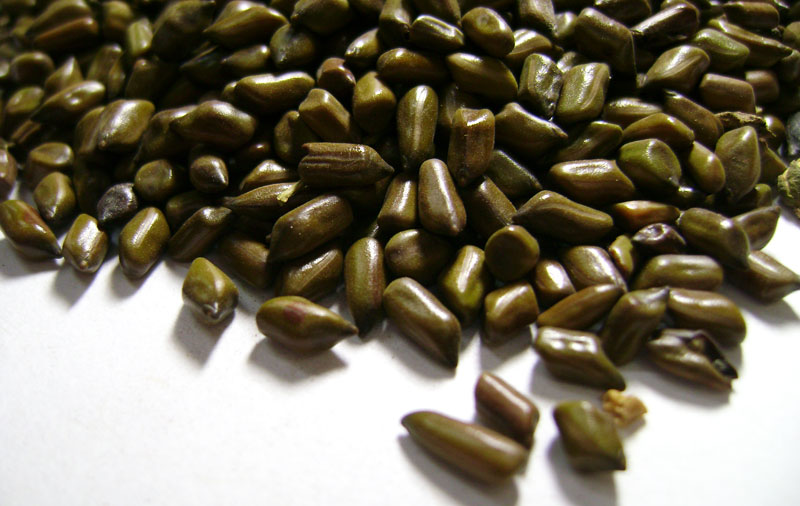Cassia gum powder is a natural polysaccharide derived from the endosperm of Senna obtusifolia (Cassia obtusifolia) seeds. It has gained significant attention in various industries due to its unique properties as a thickening, gelling, and stabilizing agent. One of the critical aspects of utilizing cassia gum powder effectively is understanding its specifications, which dictate its quality and performance in different applications.
Understanding the Appearance of Cassia Gum Powder
Cassia gum powder typically presents itself as a fine yellowish-white powder. Its appearance is crucial as it can indicate its purity and suitability for specific applications. Manufacturers and users often rely on visual inspection to assess the initial quality of cassia gum powder.
Technical Specifications of Cassia Gum Powder
Moisture Content: The maximum allowable moisture content in cassia gum powder is 12%. Excess moisture can lead to microbial growth and affect the powder's stability.
pH Level: The pH range of a 1% solution of cassia gum powder should be between 5.5 and 6.5%. Maintaining the pH within this range is essential for its functionality as a gelling agent and its compatibility with other ingredients.
Gum Content: Cassia gum powder must have a minimum gum content of 80%. The gum content directly influences its thickening and stabilizing properties in food and industrial applications.
Protein Content: The protein content should not exceed 5%. Higher protein levels can impact the purity of the product and lead to undesirable effects in certain applications.
Starch Content: Cassia gum powder should test negative for starch. Presence of starch may indicate adulteration or poor quality processing.
Fat Content: The maximum allowable fat content in cassia gum powder is 0.8%. Elevated fat levels can affect its solubility and performance in formulations.
Ash Content: The ash content should not exceed 1%. High ash content may indicate contamination or inadequate purification during processing.
Acid Insoluble Residue: Cassia gum powder should have an acid insoluble residue of maximum 3%. Excessive residue can affect its purity and suitability for specific applications.
Gel Strength: The minimum gel strength of cassia gum powder is 500. Gel strength is crucial for its functionality in food products, particularly in controlling texture and viscosity.
Hot Viscosities: The viscosity of a 1% solution of cassia gum powder should range between 50 to 500 cps at a temperature of 50°C. Controlling viscosity is essential for achieving desired product characteristics in various formulations.
Importance of Each Specification
Each specification plays a vital role in determining the quality and performance of cassia gum powder in different applications. For instance, the moisture content and pH level influence its stability and compatibility with other ingredients. The gum content, protein content, and gel strength are crucial for its functionality as a thickening and gelling agent. Similarly, controlling parameters like fat content, starch content, and acid insoluble residue ensures the purity and consistency of the product.
Applications of Cassia Gum Powder
Cassia gum powder finds widespread applications across various industries, including:
- Food and beverage
- Pharmaceutical
- Pet food
- Cosmetics
- Textile
- Paper and printing
Its versatility as a thickening, gelling, and stabilizing agent makes it indispensable in formulating a wide range of products, including sauces, soups, dairy products, confectionery, pharmaceutical formulations, pet food, cosmetics, and more.
Benefits of Using Cassia Gum Powder
- Natural and plant-derived
- Excellent thickening and gelling properties
- Stable performance across a wide range of pH and temperature conditions
- Compatible with a wide range of ingredients and formulations
- Cost-effective alternative to other gelling agents
Comparison with Other Gelling Agents
Cassia gum powder offers several advantages over other gelling agents, such as guar gum and xanthan gum. It exhibits superior stability and performance in acidic conditions and provides excellent water-binding capacity, making it ideal for various food and industrial applications.

Production Process of Cassia Gum Powder
The production process of cassia gum powder involves several stages, including seed selection, cleaning, grinding, purification, and drying. Careful processing ensures the preservation of its natural properties and compliance with quality standards.
Quality Control Measures
Manufacturers implement stringent quality control measures throughout the production process to ensure the consistency and purity of cassia gum powder. This includes regular testing for moisture content, pH level, gum content, and other specifications to meet industry standards.
Market Trends and Demand
The demand for cassia gum powder continues to grow globally, driven by its increasing applications across various industries. Market trends indicate a rising preference for natural and plant-based ingredients, further fuelling the demand for cassia gum powder in food, pharmaceutical, and cosmetic sectors.
Regulatory Considerations
Cassia gum powder is subject to regulatory oversight in many countries to ensure its safety and quality standards. Manufacturers must comply with relevant regulations and guidelines governing its production, labeling, and usage in different applications.
Environmental Impact
The cultivation and processing of cassia gum involve relatively low environmental impact compared to synthetic alternatives. However, sustainable practices and resource-efficient production methods are essential to minimize environmental footprint and promote ecological sustainability.
Safety Precautions in Handling
While cassia gum powder is generally regarded as safe for use, proper handling and storage precautions are necessary to prevent contamination and ensure product integrity. Users should follow recommended guidelines and safety protocols to avoid potential risks.
Future Prospects and Innovations
Ongoing research and development efforts aim to explore new applications and formulations utilizing cassia gum powder. Innovations in processing techniques and product development are expected to further expand its market presence and efficacy in various industries.
Conclusion
Cassia gum powder offers a natural and versatile solution for thickening, gelling, and stabilizing applications across diverse industries. Understanding its technical specifications is essential for ensuring product quality, performance, and regulatory compliance. With its unique properties and widespread applications, cassia
FAQs About Cassia Gum Powder
Web Design & Digital Marketing by Opal Infotech

